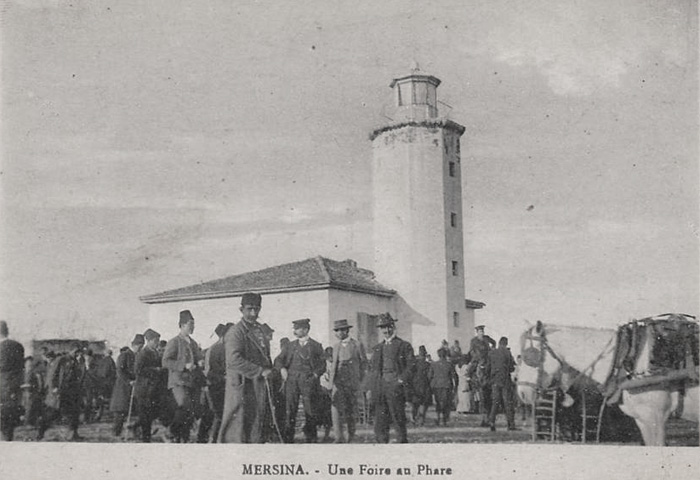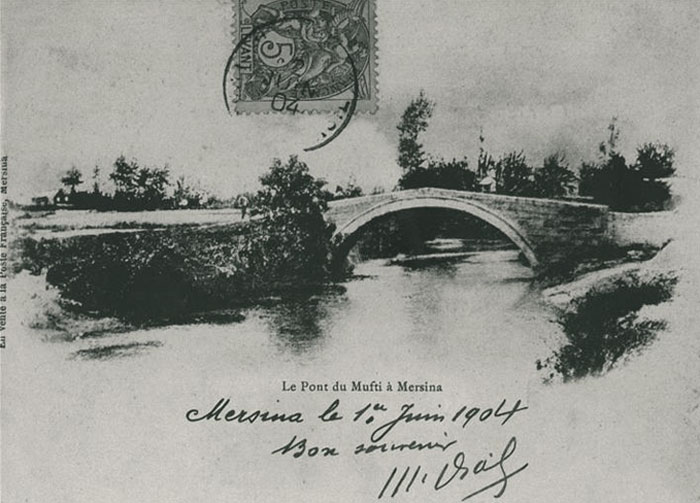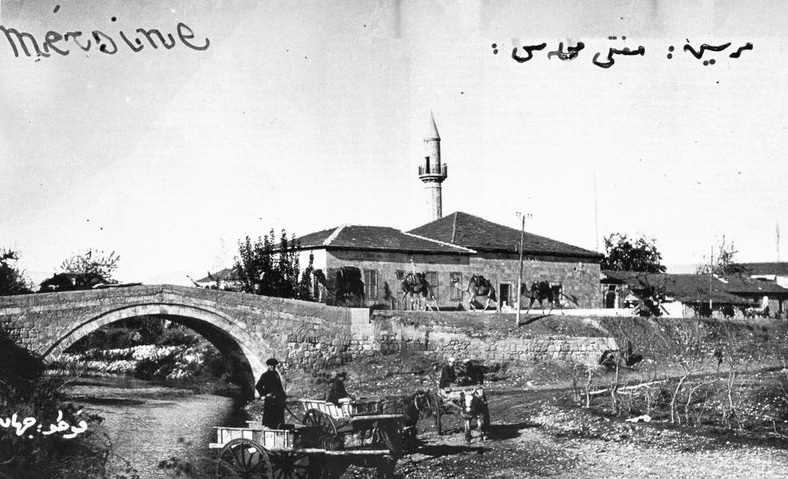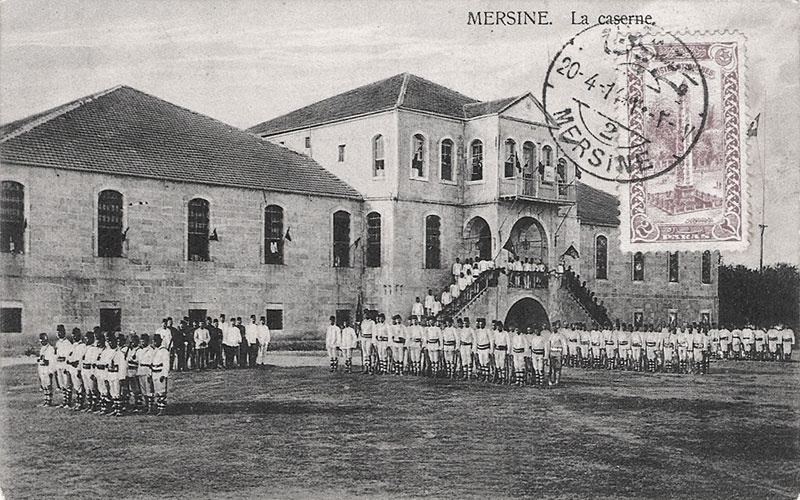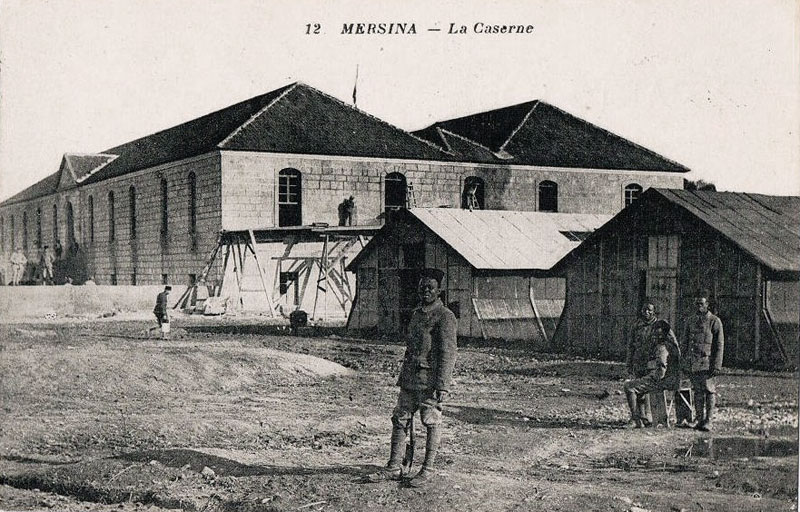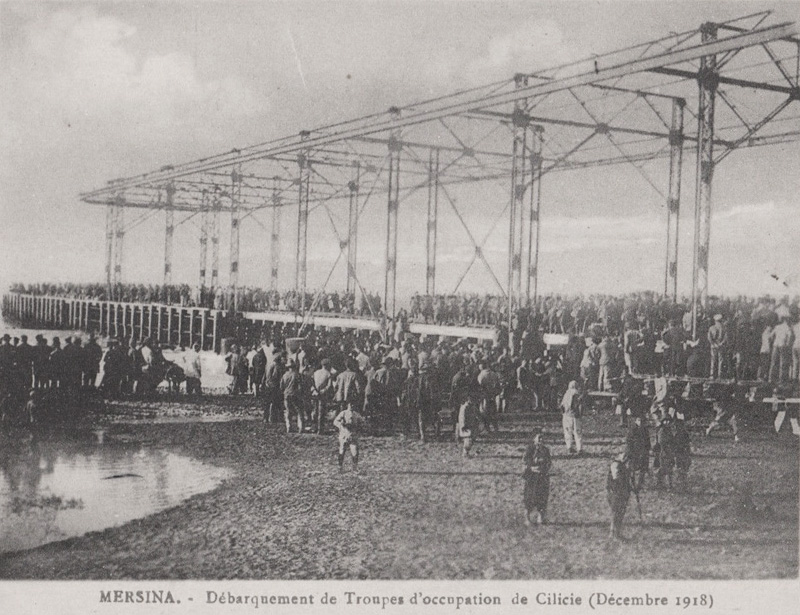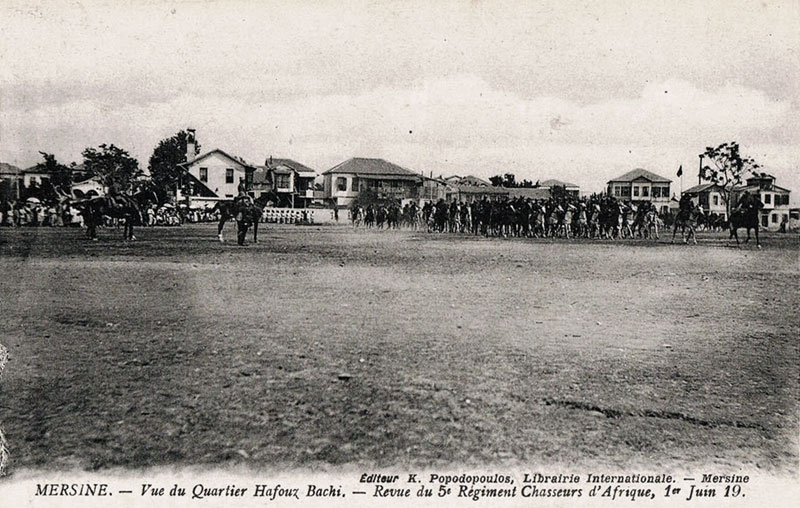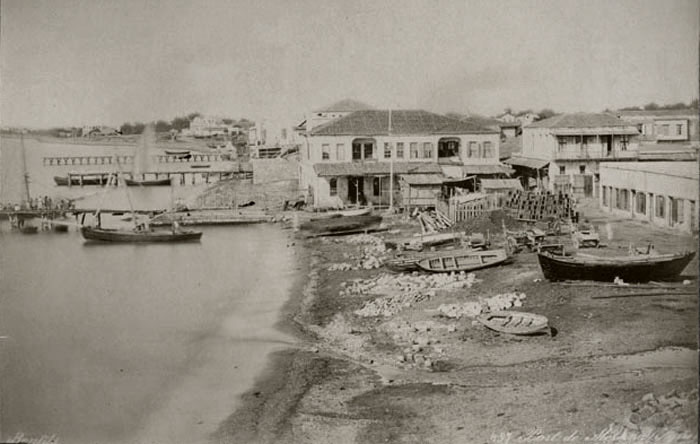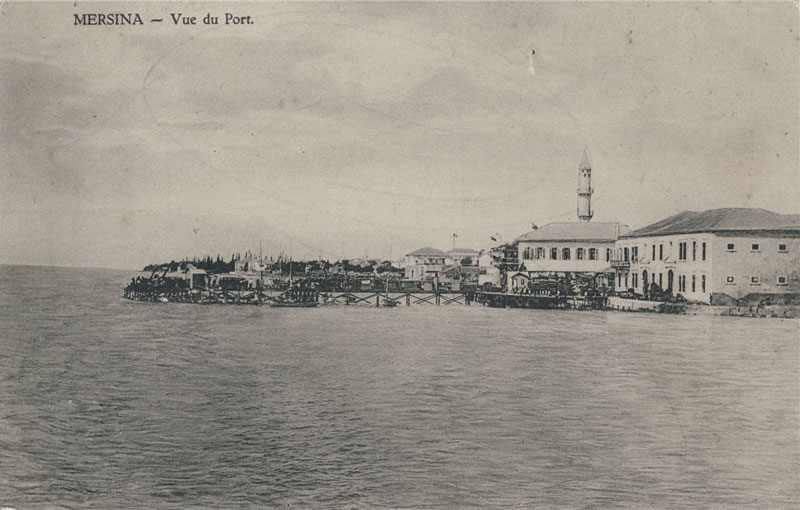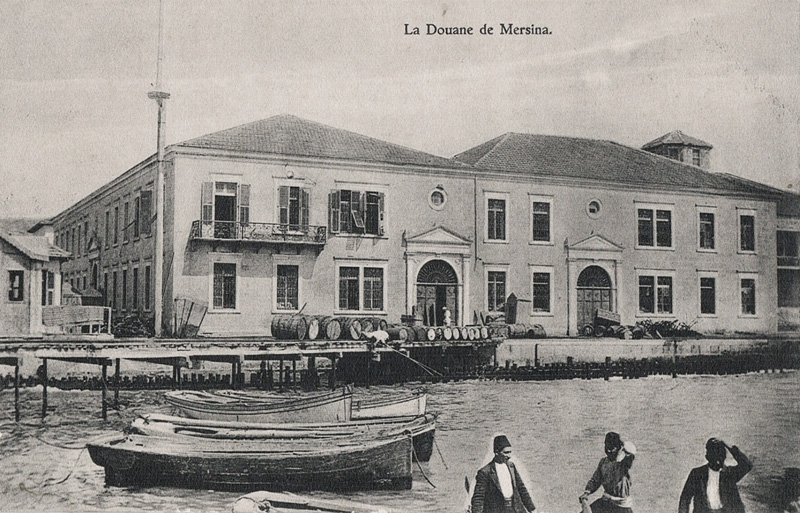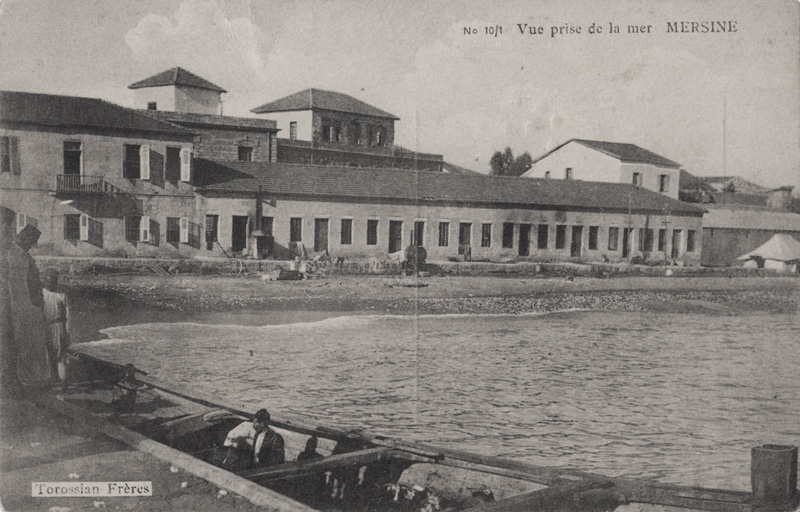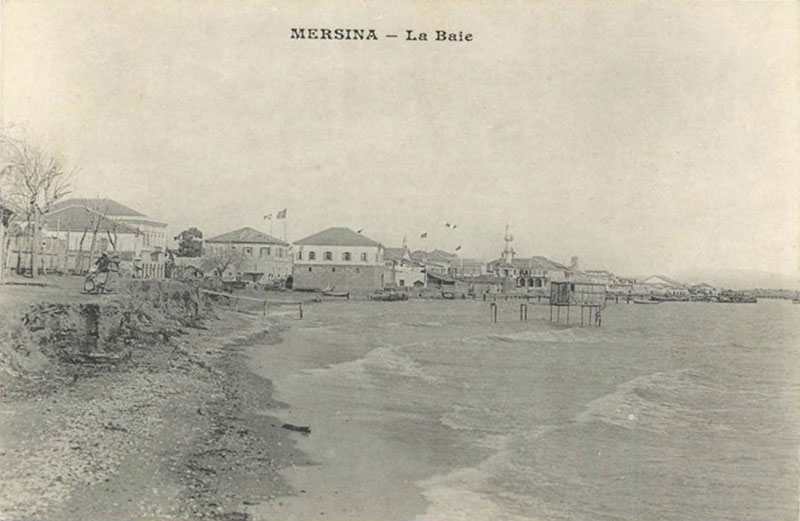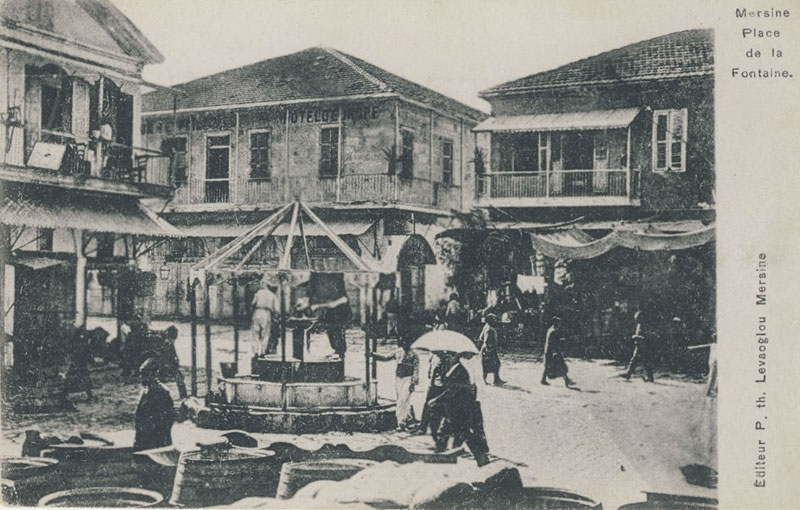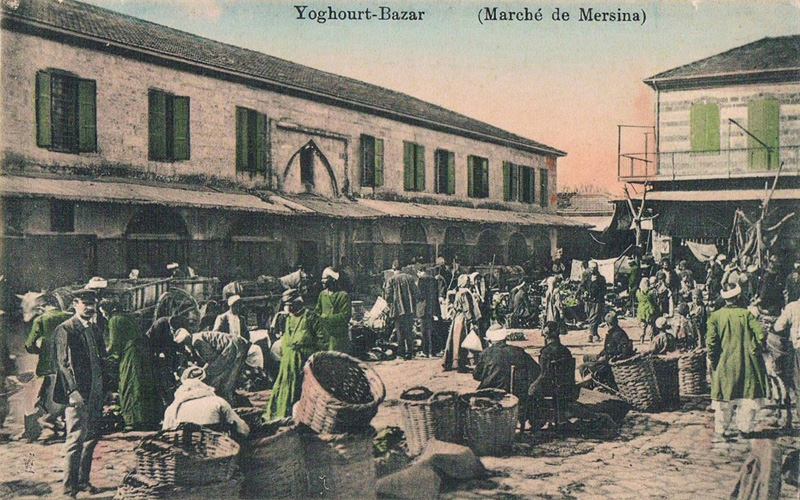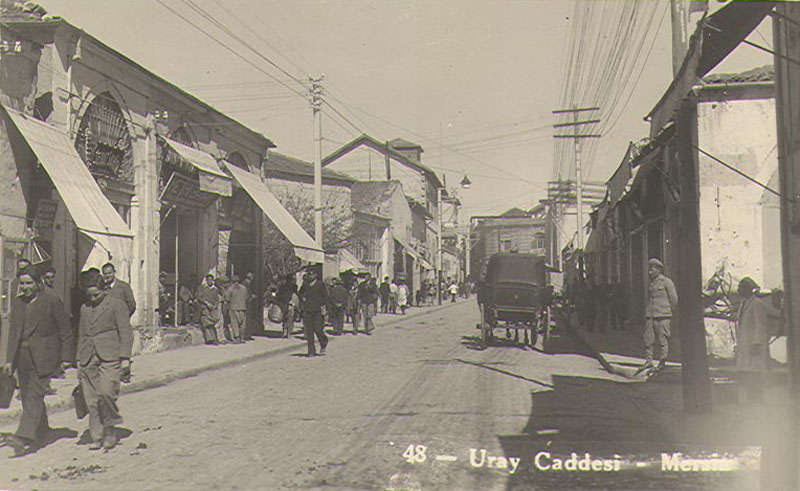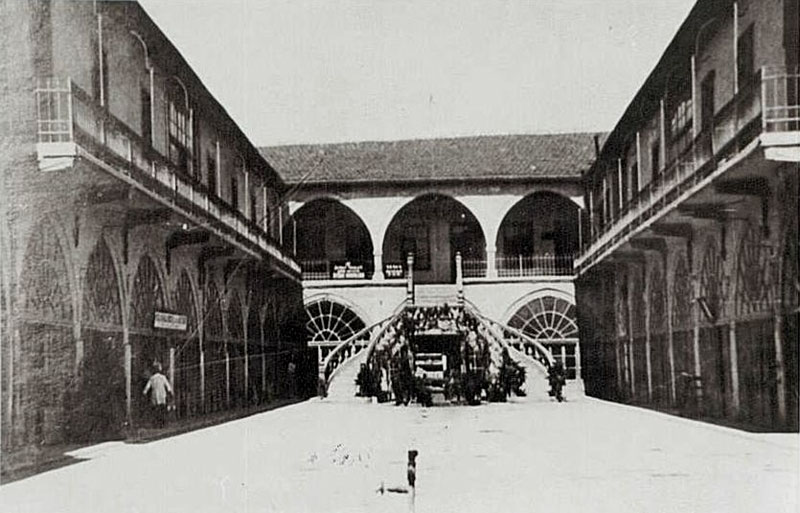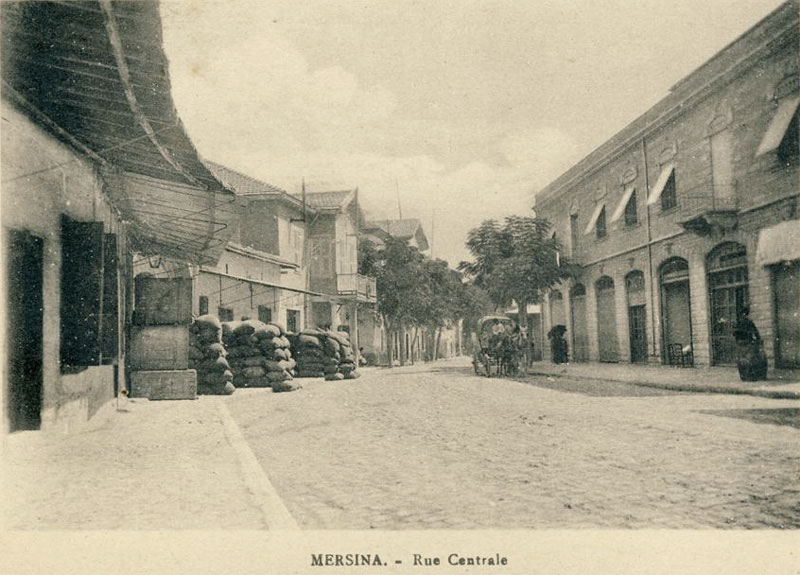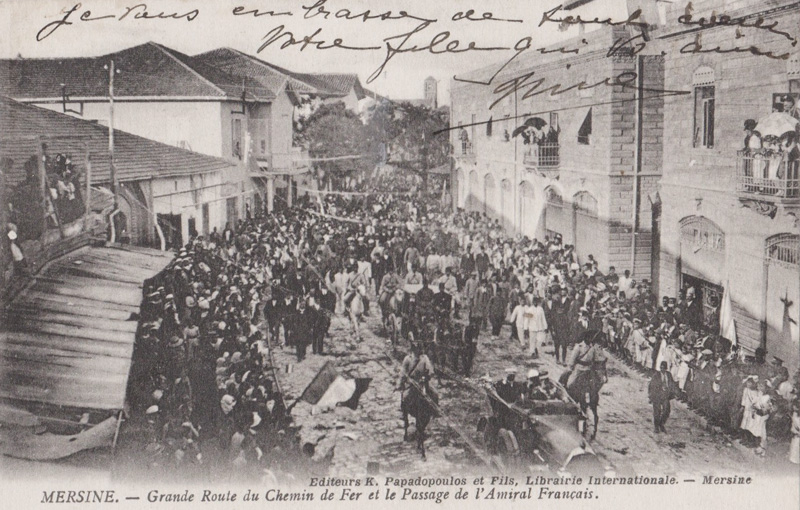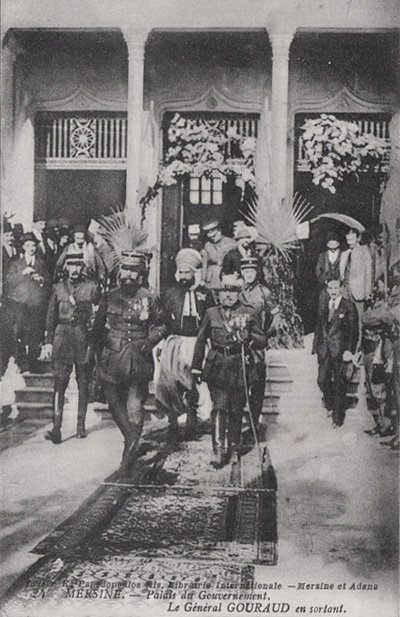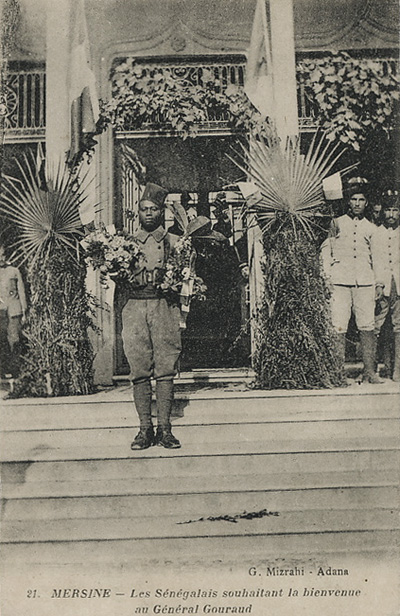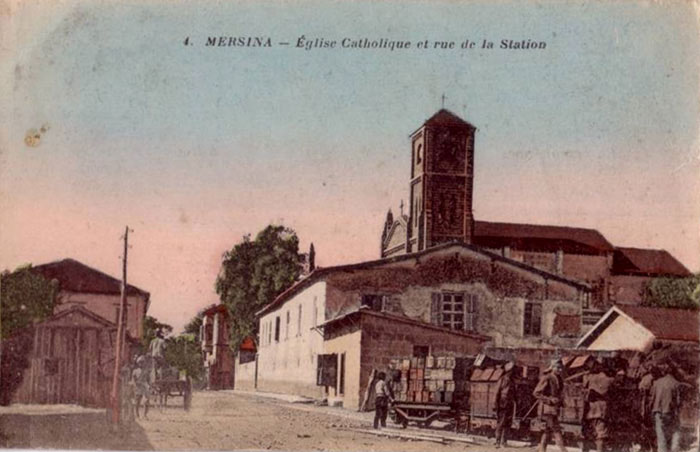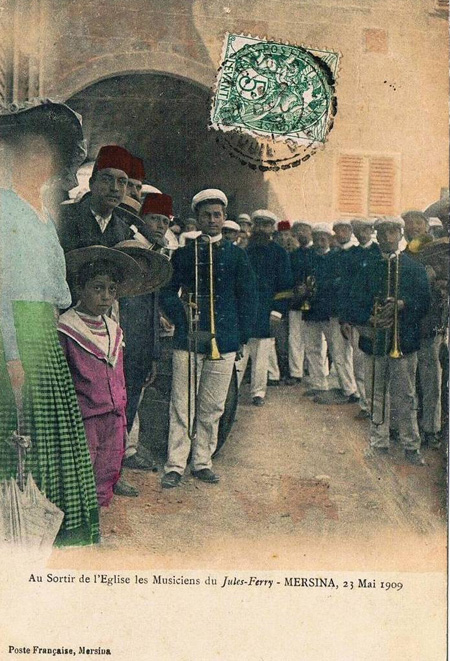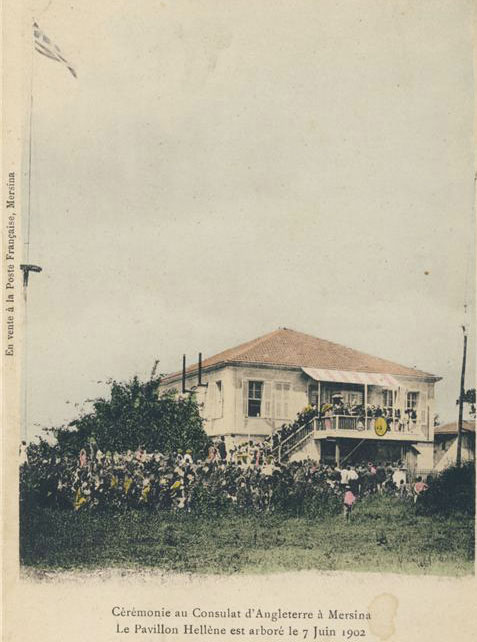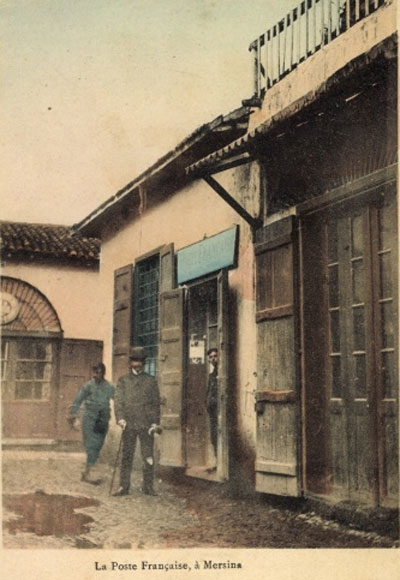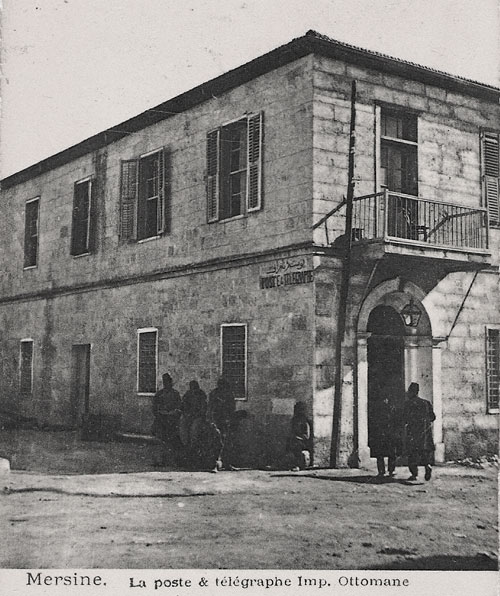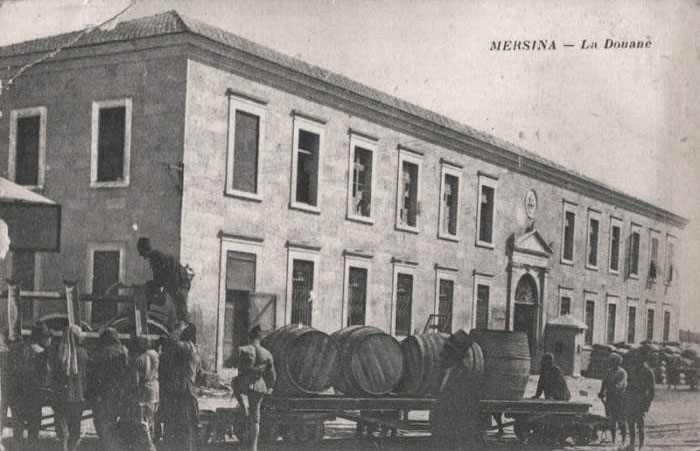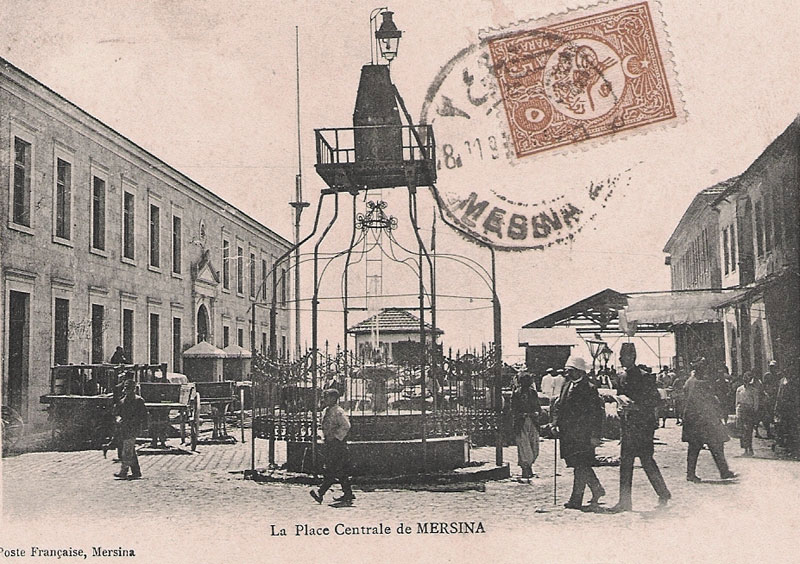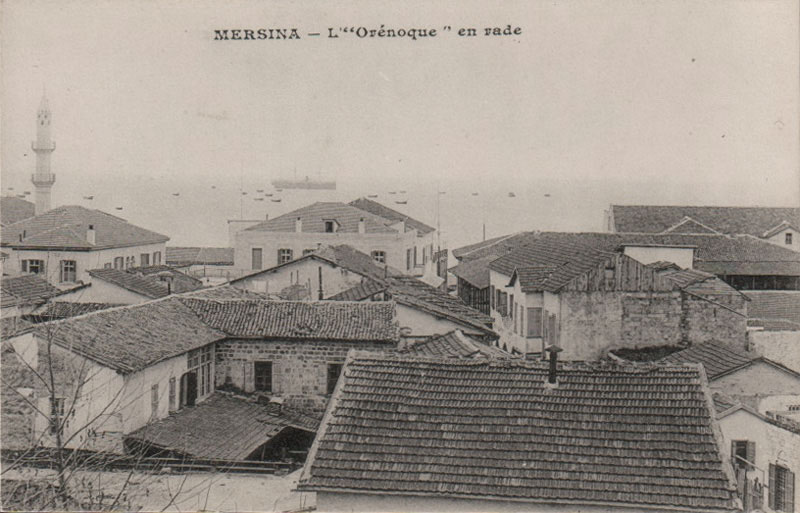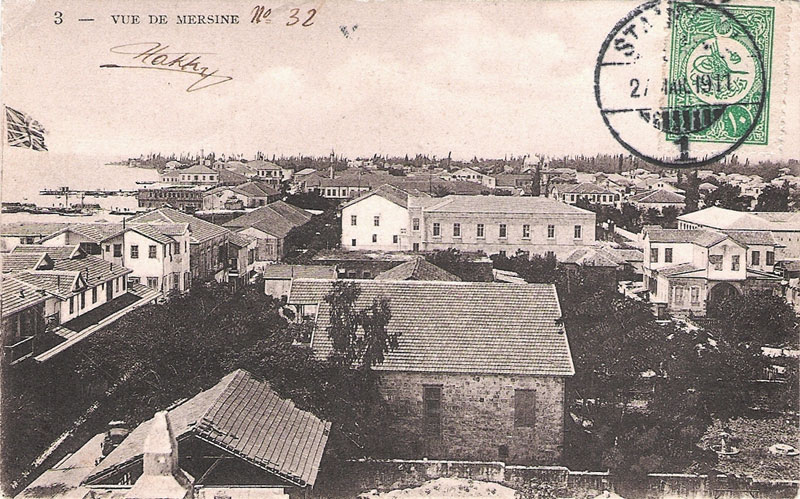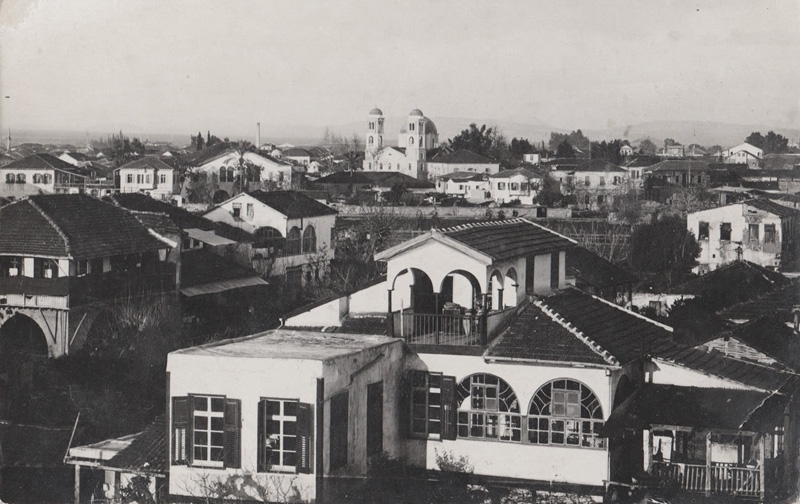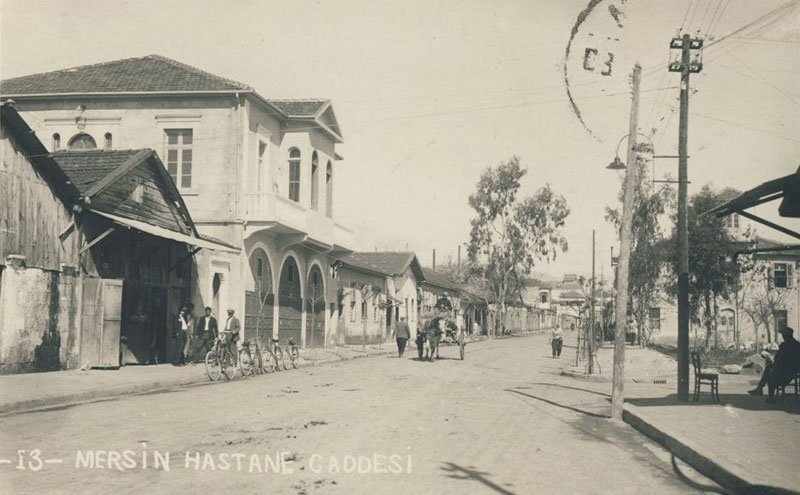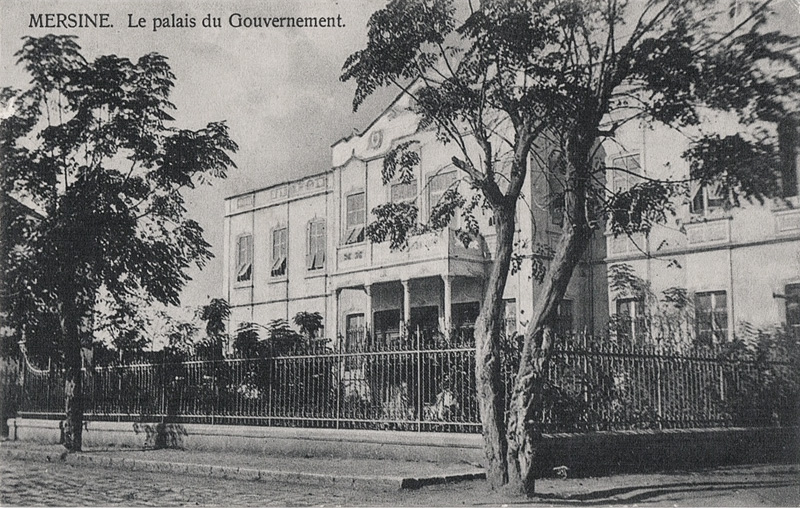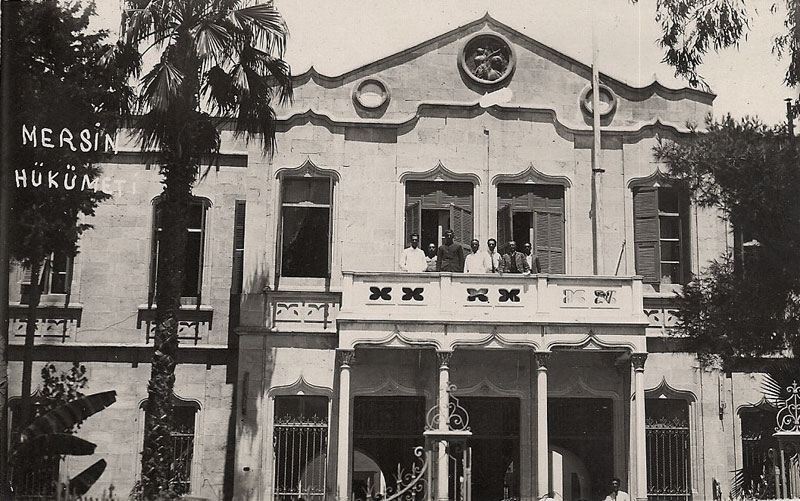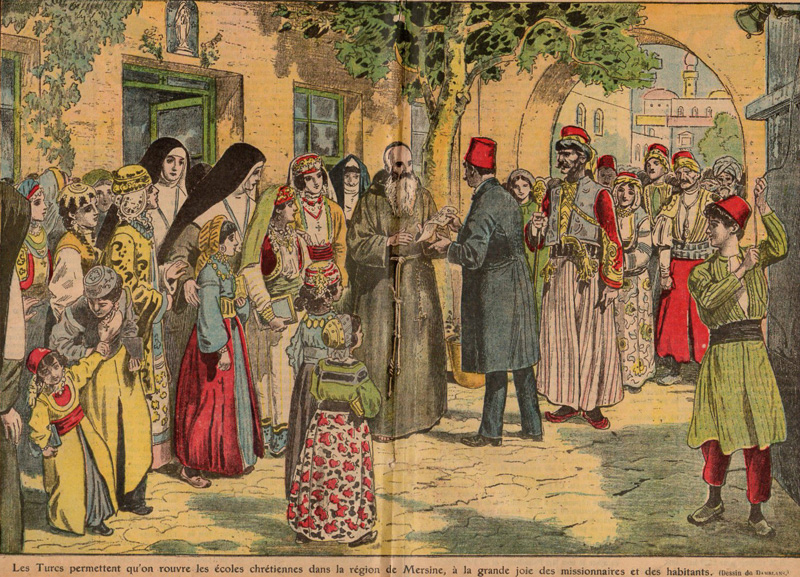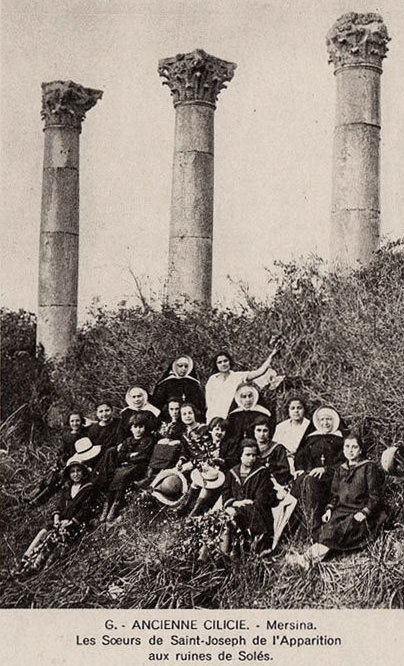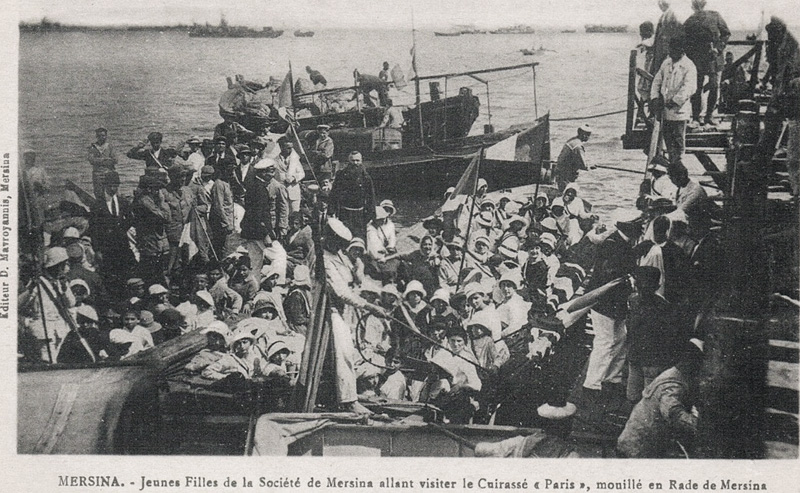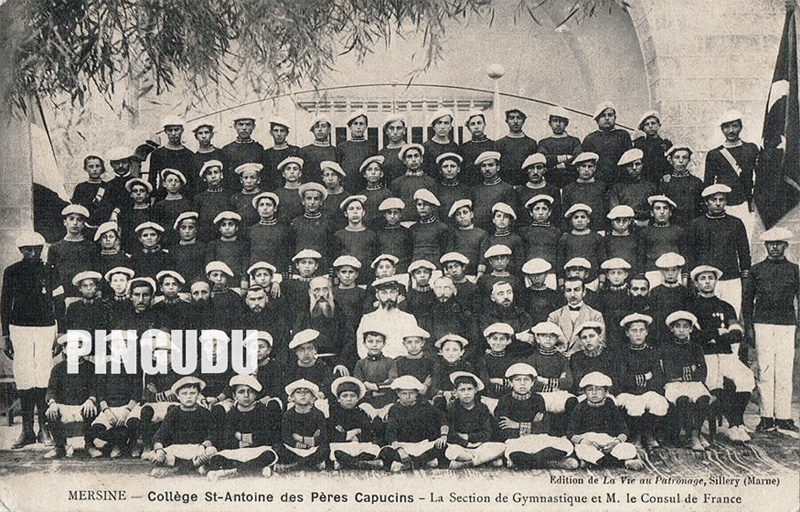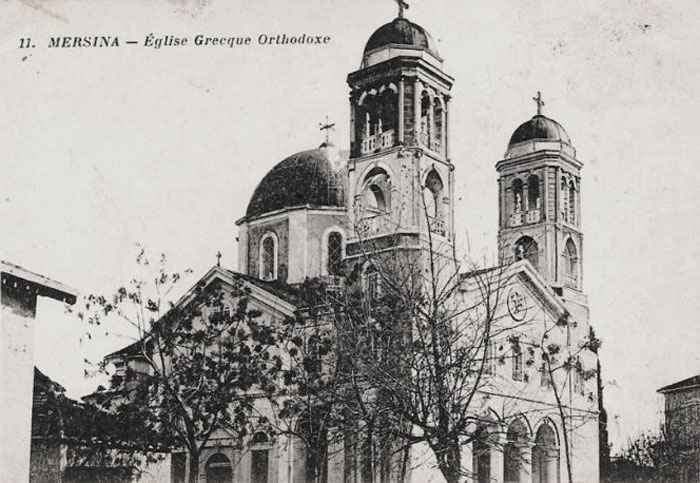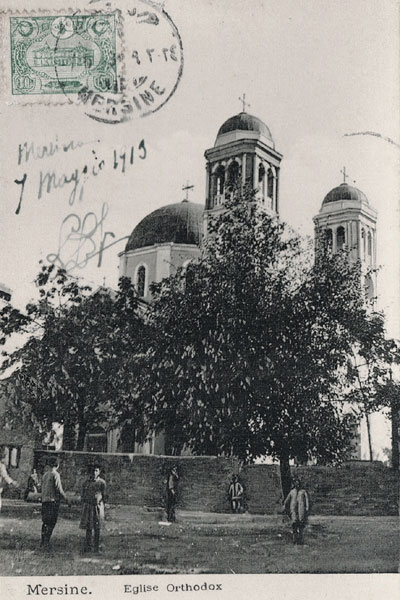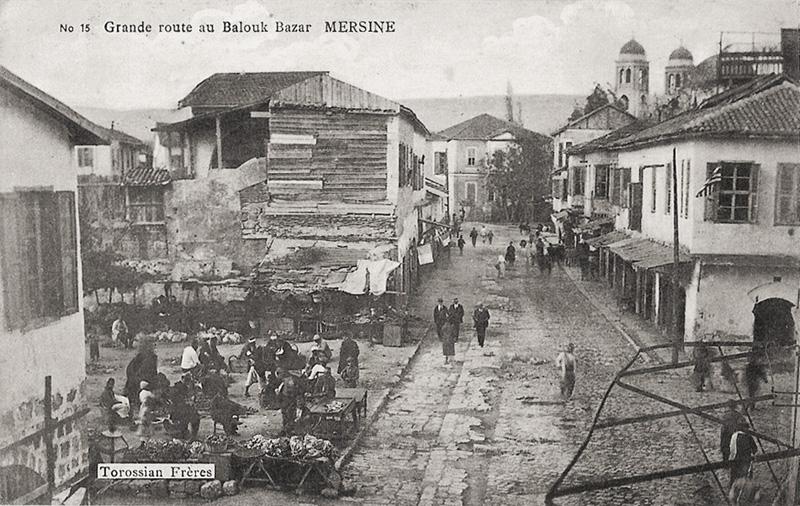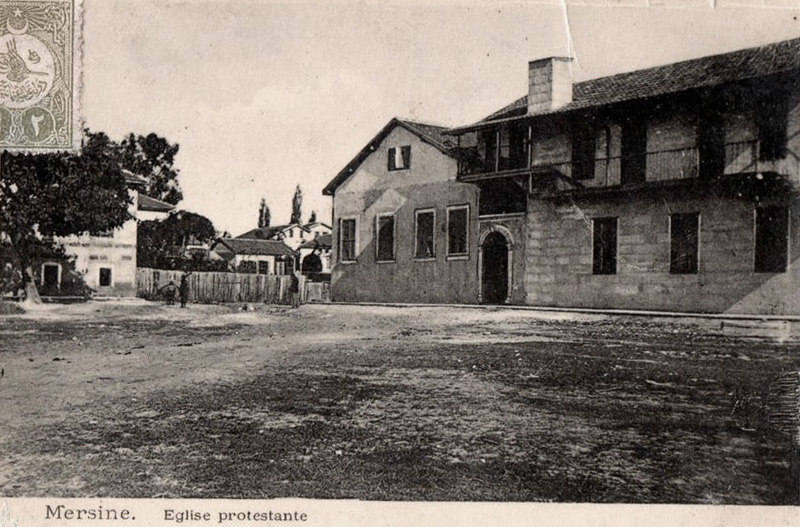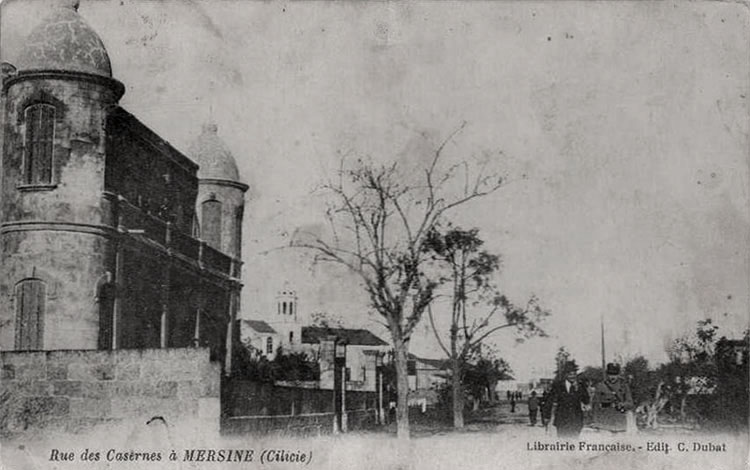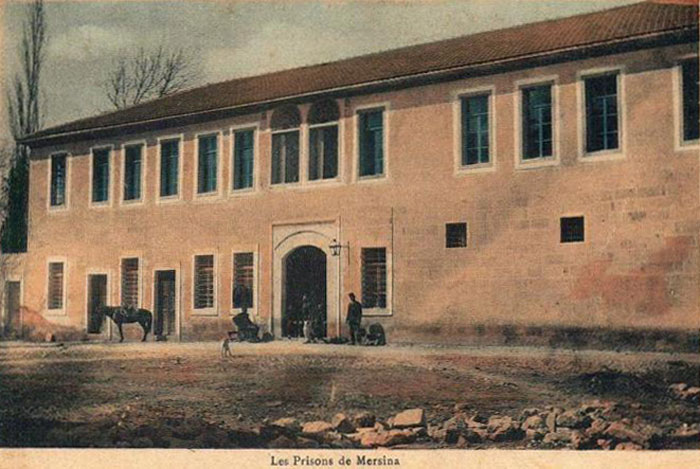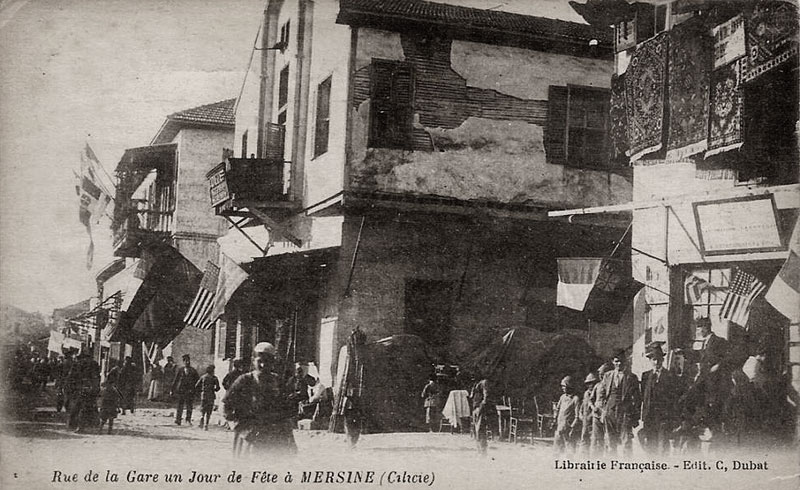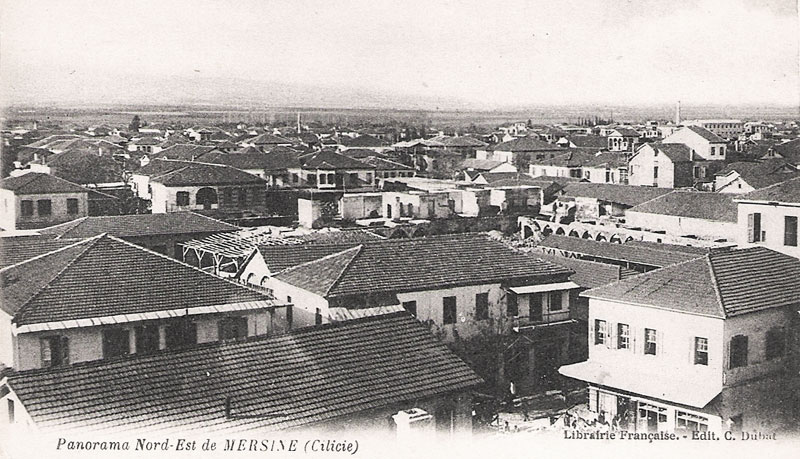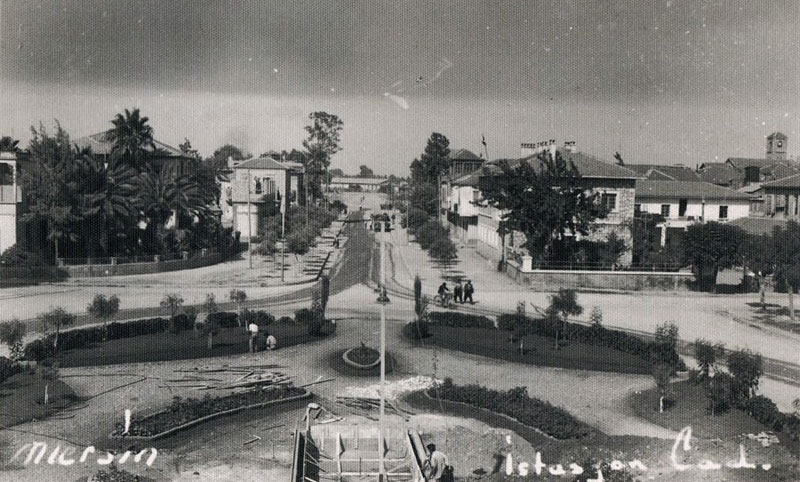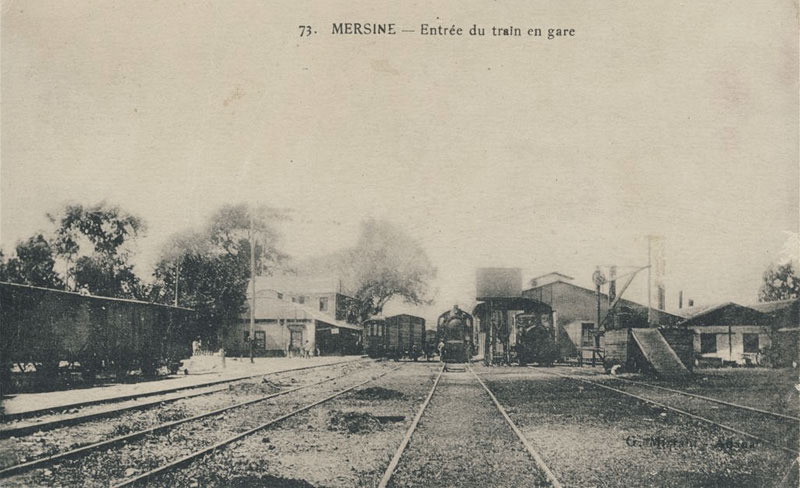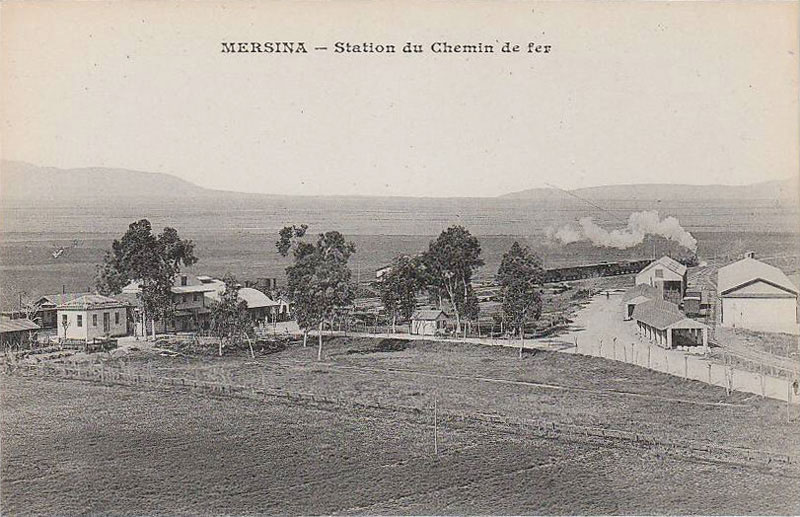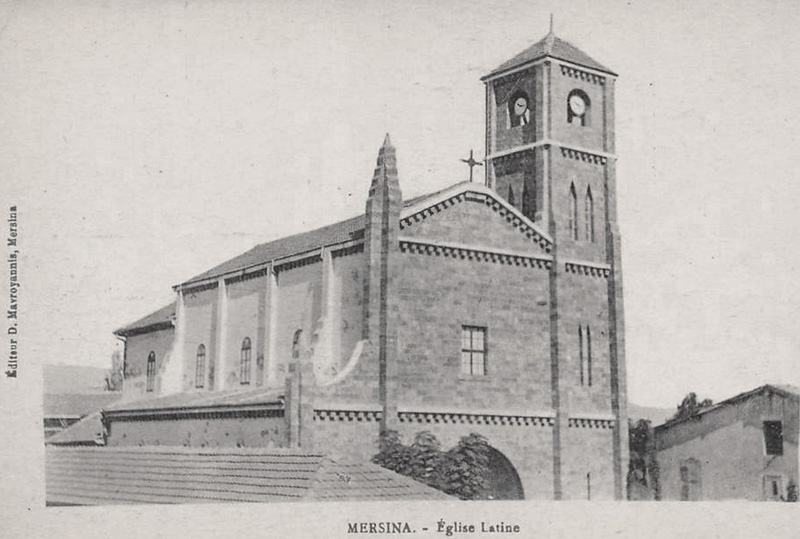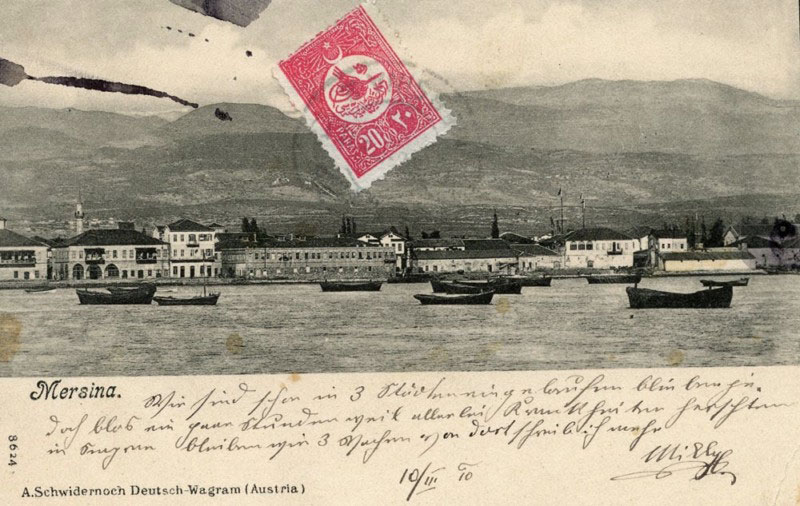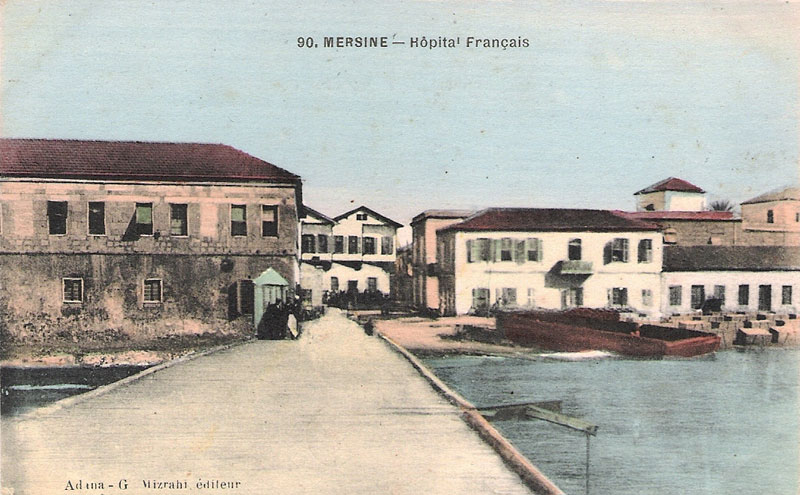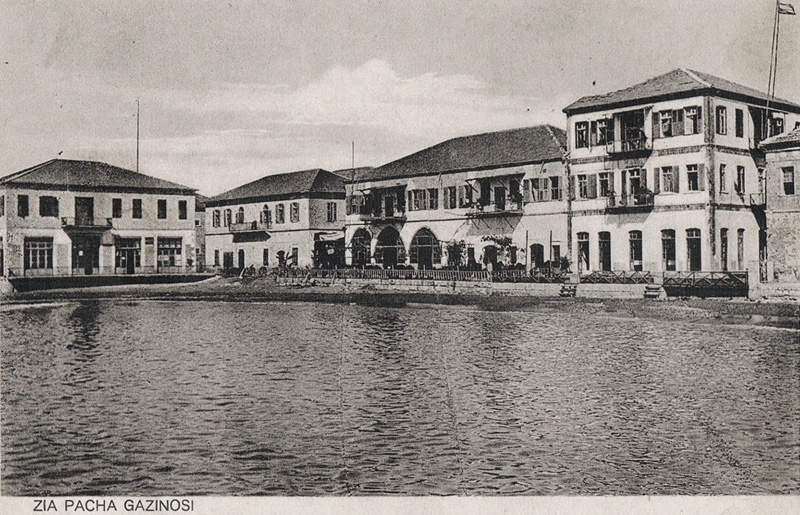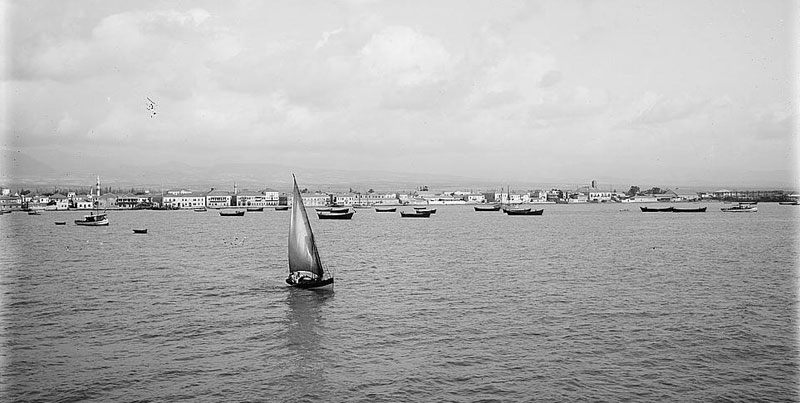|
The old barracks of Mersina, once at the western most edge of the town, before the huge increase of population in the past 50 years. Below, the same building at the time of the French occupation, with Senegalese troops being a major part of the contingent, c. 1920.
Early view of Mersina - East end of the town, vicinity of the Catholic church. Railway station beyond.
In background Jetties adjacent to Gümrük Meydanı (Customs square). Centre of town.
View of the bay from West end of town towards Jetties. One of Rickards houses is on the left foreground.
The fountain square is no longer in existence.
The tea garden by the sea that also served as an open-air cinema was right across from the building of the French merchant shipping company Messageries maritimes whose side wall is seen on the edge of this picture, behind the sitting man. The building now serves as the local trade club (Tüccarlar Kulübü).
Uray named main road at back of town. Mostly commercial traffic leading to Yogurt bazarı.
Main road leading to the station. On the left in foreground gated entrance to Azak İş Hanı (Han = a centre of commercial offices). On the right, horse drawn cart coming from one of jetties, corner building behind that is Sursok Han.
The courtyard of Azak İş Hanı, in modern terms premises rented by several commercial undertakings. In the 1949-50 period I (Patrick Grigsby) worked at Amado Biraderler, engaged in export as an English correspondent, typing letters, preparing quotes.
Main road, just after the entrance to Azak İş Hanı, leading to the railway station.
The St Antoine Catholic Church of Mersin. The narrow-gauge (decovil) line ran between the railway station and customs square.
What appears to be musicians from a visiting French ship ( Jules Ferry) leaving the Catholic Church, 1909. The former British and German Consulates.
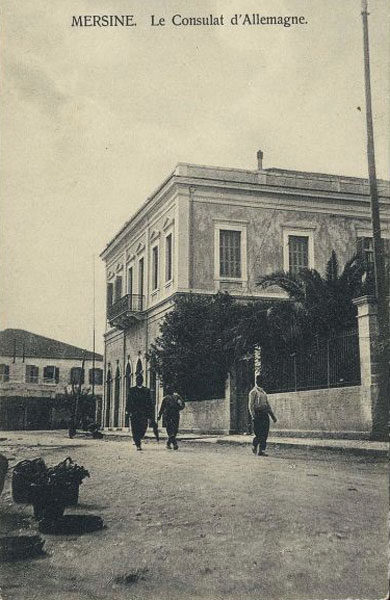 |
This property later became what was known as the Tahinci house where I often played (from mid 1930s) with my friend whose grandmother Madame Tahinci was still alive and the matriarch of the extended family living there at the time. The house was built by Christmann, the German Consul of the time, who was married into the family and infact was sometimes known as the Christmann property. It must date back to the late 1800s and had a truly palatial interior. One of the features that had most impressed me even as an infant was the magnificent marble stairway with what must have been Grecian scenes in oil along the walls.
My mother Theodosia and her Rickards family were very friendly the a High Court Judge [Ağır Ceza Hakimi] called Sadık Bey who lived up the side road that can be seen between the Tahinci house and the Rickards properties facing it on the postcard. One of Sadik Beys sons worked (I believe as a Reporter/Editor?) of the local paper - Yeni Mersin. It occurs to me that there must be a great deal of local information available even to this day at that source.
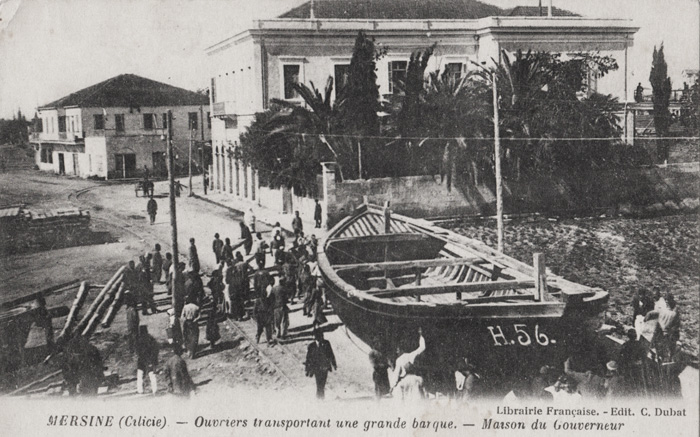 |
 |
 |
Possibly the earlier offices of this shipping company.
The former French Post Office of Mersina.
La Douane which gave its name to Gümrük Meydanı.
Mersina was an open roadstead - ships anchored out.
This road heads north past the big Yogurt Bazarı and then the General Hospital of Mersin and eventually leads to Gözne Yaylası [mountain valley]. Not only the General Hospital of Mersin of the time, pre-1939, but also the electricity generating station, powered by Ruston and Hornsby large diesel-electric generators.
Main sea front road (corniche) heading West. One of Rickards houses is on the right. Beyond on the left is Millet Bahçesi - Peoples park and cafe on opposite side of road to Syrian Orthodox Church (spire visible above roof top).
Government building on the back road leading to the Station.
Nuns and pupils of the St Joseph Catholic School of Mersin at the Soli (Pompeiopolis) Greco-Roman ruins by sea coast, about 10 km to the west of the city.
This church has been demolished certainly pre-1935.
This area was not just a fish market, but stalls sold fruit, vegetables, shoes etc.
The Syrian Orthodox Church of Mersin.
The former Nacar house, now known as the Chachaty House, that is still standing. In the background the Syrian Orthodox Church is visible, still standing and functioning.
It looks very much as if this prison view was taken from inside the place though Im puzzled why! I used to frequently go past the Prison the entrance to which was on the main road leading to the Station. As one would expect there was a large sort of porch with heavy barred steel doors that could just be seen in the dimly lit recess. Always crowds of relatives waiting patiently to be allowed into see their near and dear. Not far along and on the opposite side of the road were the big homes of the Debbane and Chelfoun families where my mother would most likely be making for with me in tow. The road, cobbled as usual, would have mature trees which provided the much needed shade along the pavements.
Mersin station was a terminus. Trains only in direction of Tarsus and Adana to the East.
The impressive cathedral like tower of the Catholic church. Also, the typically big block of houses which these very ones were home to (1930s) prominent old Mersin families, the Sukri Diabs and Eduard Butrous both emigrees who were wealthy merchants of the time.
Note: The use of the style, Mersina would have been dropped for the new Mersin spelling soon after 1923 - all photo titles courtesy of Patrick Grigsby.
|
